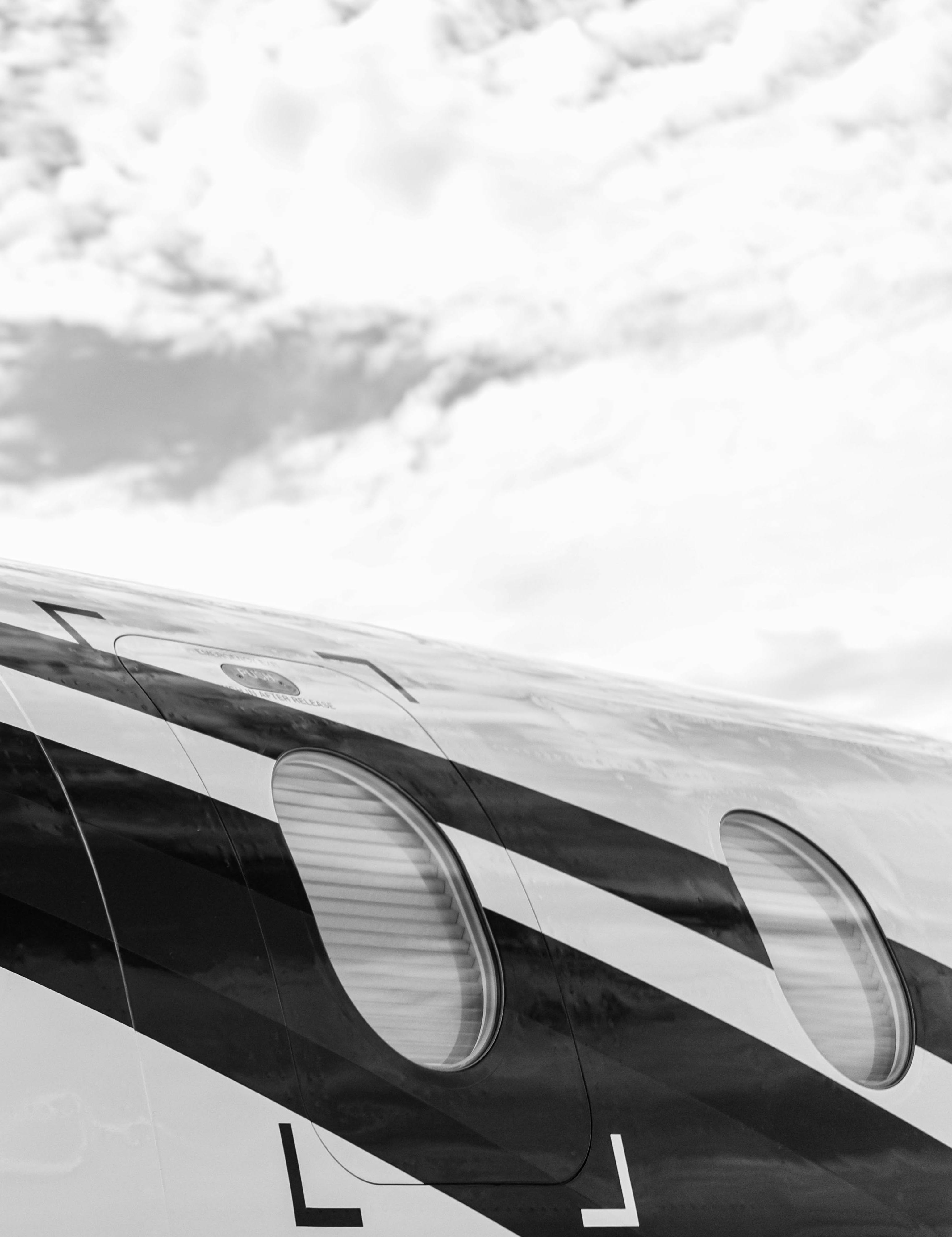
4 minute read
Buyer’s Checklist

Section Title | 5 “ - Scott C., JetSwiss Client
Things to Consider Before Buying a Used Aircraft
Pilatus PC-12
Since many clients are surprised by the amount of work and detail that goes into each project, we’ve compiled a list of ten things to prepare you for the purchase of your Pilatus aircraft.
1.
Know the product.
You know you want a PC-12 for its efficiency, safety and comfort, but do you understand the nuances between models? The /45, /47, NG and NGX all boast very different variants and equipment options. Knowing the vintage and capabilities of each will help you assess which aircraft makes sense for your situation and budget. Knowing the quirks and opportunities of each model will also dictate the diligence needed once you begin the buying process. And, if you haven’t had the opportunity to engage a Pilatus via friend, charter, or enthusiast (think JetSwiss) you should do so!
2.
Know the market.
In some seemingly obvious advice, you’ll need to establish budget parameters. But be careful! Thumbing through Controller.com may not reveal the whole story. Often times, bad actors in “Brokerville” attempt to inflate market values with absurd aircraft listings. So dig a little deeper while doing your research. JetSwiss’ monthly magazine, The Pilatus Pulse, is stocked full of up-to-date data surrounding the PC-12 market. We track every PC-12 and PC-24 transaction, so you can realistically gage what your dollar will afford.
3.
Understand the full picture on expenses.
Create an example operating budget. (Or allow JetSwiss!) Beyond the purchase of your aircraft, you can expect to spend $125,000 to $175,000 in yearly fixed expenditures such as pilot, insurance and hangar. Depending on the vintage of the aircraft, fuel, maintenance, parts, labor, engine reserve cost $750 to $1,000 per flying hour. When it comes to crew, management and operations, costs are variable. Timing also plays a role in the expense calculation. Is the aircraft due for an annual inspection or major component replacement/overhaul? Take time to consider all the pitfalls.
4.
Maximize the tax benefit.
Ask yourself, (or your accountant if he/she is familiar with aviation accounting) can you depreciate the aircraft? On what levels? Most buyers have multiple entities or LLCs in their portfolio. Consider which organization makes the most sense (if any) to own an aircraft. Be sure to consider both taxes and depreciation, as well as liability and legal structure. Our expert resources and partners take great care in analyzing this situation for clients, as it is never one-size-fits-all. Your friends at the I.R.S. and F.A.A are ready for you.
5.
Make sure your business is properly structured for purchase.
There may be laws within a state that can impact the structure of the ownership. Start with the location in which the aircraft will be based and consider other options at your disposal. You may find that laws of a nearby state may be more beneficial to your company over another. It’s wise to speak with someone wellversed in aviation law during this point in the process.
6.
Get your finances buttoned up.
Whether you’re looking to finance or pay cash, it’s important to have a CFO or accountant that’s experienced and ready to engage. A slow back office could decrease your buyer’s leverage or create kinks in the deal. For example, it’s a standard requirement to have the last three years of corporate and personal returns for diligence. You don’t want paperwork holding up your buying timeline.
7.
Understand leverage as a buyer.
Every journey to ownership is unique. It’s important to understand where, when and how to leverage your strength as a buyer. For example, use the maintenance schedule and potential upcoming costs to your advantage. Make a calendar with key dates marking the “point of no return” and any points of financial and legal risk escalation. Minimize timing on your side. Instead of waiting on a maintenance slot at a Pilatus Service Center, use an expert (like JetSwiss) to perform diligence for a quicker transaction.
8.
Find hangar space.
Start with the airport where your aircraft will be based. Options include community hangar space, private hangar space, building, leasing, renting and purchasing. Give consideration to resources at the airport. What are the navigational resources for bad weather? Runway length? De-icing services? Maintenance? Fuel prices? A discussion with someone in the industry will go a long way in helping you make the right decision on a home for your PC-12.
9.
Give consideration to operations.
Questions you should be asking yourself include: Are you flying the plane yourself? Hiring a pilot or management company? Will it be on a charter certificate? Who will maintain my airplane? How much should I budget? What are the insurance considerations? Establish a shortlist of resources and compare your options.
10.
Pick a point person(s).
This person (or team) will be overseeing financial, legal, insurance, technical and administrative tasks throughout the purchase process. So, ask yourself who you’d like to read and understand the 6500+ pages of maintenance manual information, 28 pages of a typical aircraft purchase agreement, warranty information and so on. Is it your pilot? Employee? Brother-in-law? There are a million and one potential landmines for risk as the buyer. Make sure you have an expert on your side to minimize the potential risk to you legally and financially.

